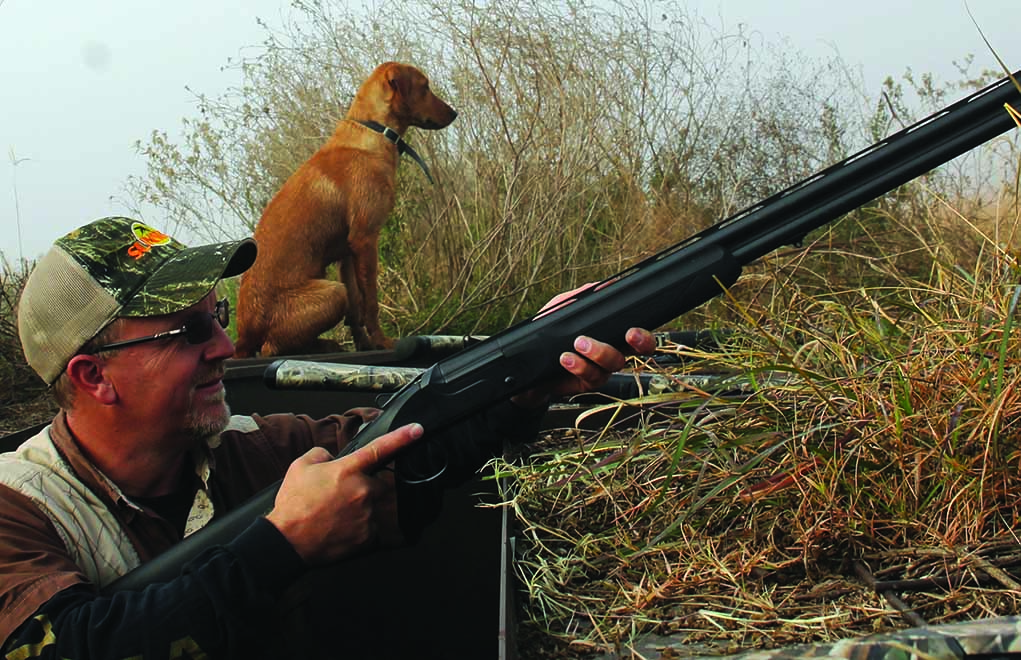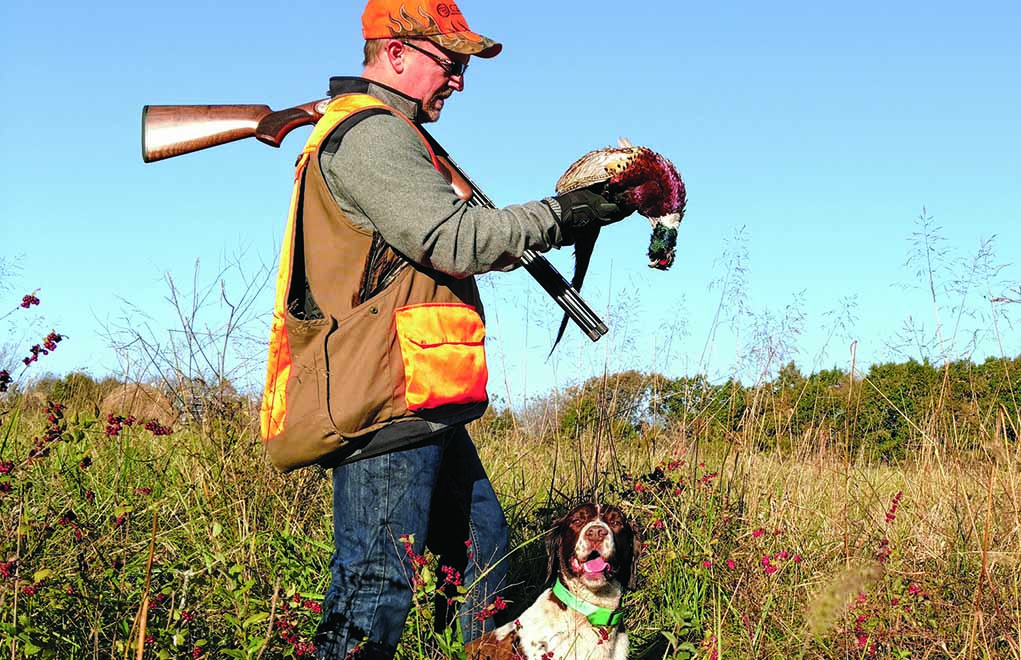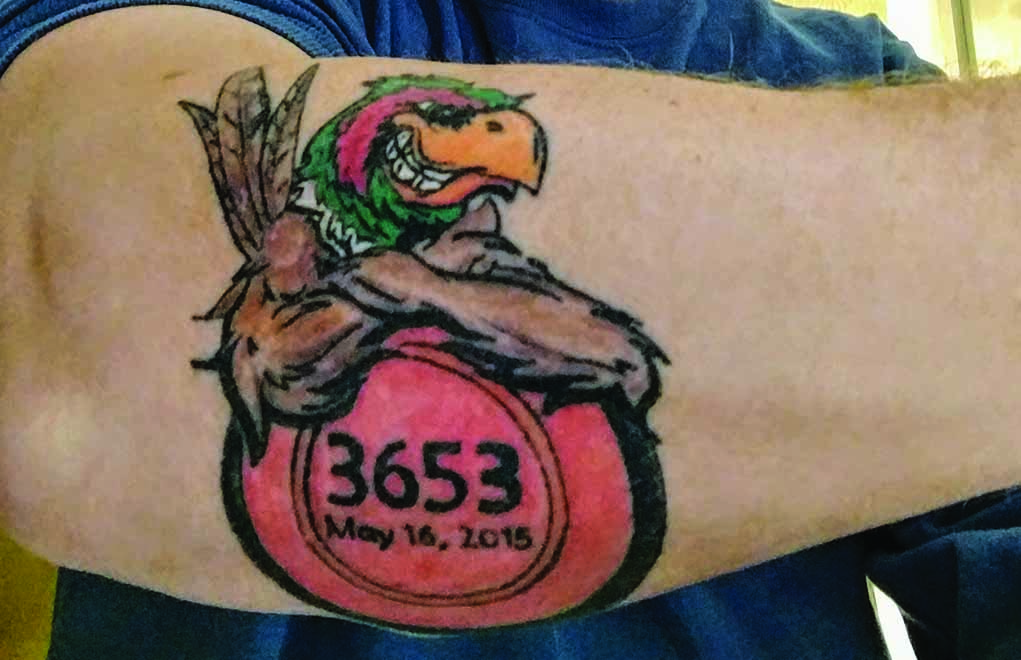
World-record shotgun shooter Dave Miller identifies the five most common missteps that plague shotgunners and their cures.
What are the common shotgun shooting mistakes:
- Looking at the gun first
- Not moving to the target
- Not inserting the muzzle ahead of the target
- Fearing the rabbit
- Not establishing a routine
Shooting a shotgun is easy, right? Everybody knows you just point the muzzle in the general direction of the target and pull the trigger. With all those hundreds of shot pellets it’s hard to miss. But — somehow — we do miss … and some of us miss a lot.

Dave Miller doesn’t miss with a shotgun very often. In fact, he probably misses less than anyone you know. Miller is the Shotgun Product Manager and Pro Shooter for CZ-USA, maker of many fine shotguns, rifles and handguns. Forget about Dave Miller as a Master Class Sporting Clay shooter and National Sporting Clays Association Level 2 Instructor. Forget about 2015, when Dave Miller landed in the Guinness Book of World Records for the most clay targets shot in 1 hour — 3,653.
Do that math: That’s one clay busted, on average, every 0.99 seconds.
All this sums up to the fact that Dave Miller basically shoots shotguns for a living, and precious few of us can say that. Who better than Miller to provide some tips on improving our scattergun skills?
So, here are five common mistakes us shotgunners make, and advice from Dave Miller on how to deal with them. Remember, some tips are specific for bird hunting, some for clay shooting — and some will help with both.
Mistake No. 1: Looking at the gun first
“You can’t shoot what you can’t see,” Miller said. “Train yourself to look at the target, and then move the gun.” Miller noted that it’s not really necessary to “see” the gun — that is, the rib and the end of the barrel — if your eyes are on the target and you mount the gun properly. “Remember, its eyes first and then the gun,” Miller added.

In hunting situations, Miller noted that it’s especially important to concentrate on a flushing or incoming bird and not the gun. Is it a hen or a rooster pheasant? What species and gender of waterfowl is it? You can’t tell if you’re looking at the gun. Also, clearly seeing the target and what is beyond it addresses obvious safety concerns as well.
Mistake No. 2: Not moving to the target
Ever had a grouse or pheasant erupt from cover as you face an angle away from the bird? Then, in haste, we often take the shot from an awkward, twisted position — and often we then miss. Miller stressed that moving to the target in a motion he calls, “step to the shot,” is very important.
More Shotgun Posts:
- CZ-USA’s Reaper Magnum Redefines Turkey Hunting
- Body Position For Wingshooting Success
- Determining Hold Point In Sporting Clays
- Footwork Fundamentals For The Perfect Shotgun Shot
“You have to take the time to move your feet and step in front of the target,” Miller said. “In this way, you’re in the proper body position to move the gun in front of the bird. Think about starting with the gun ahead of the bird, even at the low ready position when possible.”
Remember, there’s plenty of time to do this. When that grouse or pheasant or quail explodes out of cover, shooters tend to think they must shoot immediately or lose out. How fast is that pheasant flying anyway? Check the velocity on the shotshell on the box you’re using. Thirteen-hundred fps is almost 900 miles an hour, and the bird certainly isn’t moving away that quickly. You have time to step into the shot and get into the right position.
Mistake No. 3: Not inserting the muzzle ahead of the target
“There’s nothing good on the backside of the target,” Miller said. “Never get behind, and always mount the gun ahead of the target.

“In wingshooting, most birds are taken with a ‘cut-off’ move, which is where the muzzle is inserted in front of the bird from a line different than that of the target — to cut it off,” he added.
In clay target situations, the cut-off move is usually applied when the shooter is moving from the first target to the second in doubles. The shooter kills the first clay and then moves the muzzle directly in front of the second to cut it off. The key is to keep the barrel moving to avoid falling behind the pace of the target. Once behind, it’s extremely difficult to catch up.
Mistake No. 4: Fearing the rabbit
Many sporting clay shooters get spooked by the “rabbit” station. The way the target is presented, bouncing along the ground at a speed likened to an aspirin shot out of a .257 Roberts, can give any shooter nervous twitches at the line.
“Remember that the rabbit is a ‘type’ of target, not just the presentation,” Miller said. “This clay is thicker and harder to break than other clays. This means that the rabbit is heavy and loses its spin faster than other targets.

“Targets break easier when they’re spinning,” added Miller. “In clay shooting, centrifugal force is your friend for an easier break.”
For this reason, Miller instructs that the shooter should almost always plan to break the target while it’s under power to take advantage of the spin. In other words, attacking a rabbit quickly gives the shooter the added advantage of centrifugal force to break that clay with a less-perfect shot.
Mistake No. 5: Not establishing a routine
“A shooting scenario can’t end the same way every time — successfully — unless you start the start the same way every time,” Miller said. The CZ-USA Pro Shooter stresses establishing a routine, and do it the exact same way regardless of the situation — every time.
“There’s always a series of steps I go through — a ritual, if you will — each and every time I enter the box,” said Miller.
- Where is the target coming from?
- Where can I see it the best? This is where I want to kill it.
- Adjust my body and foot placement for that position.
- Start the gun between where I will begin to see the bird and the point where I want to break it.
I’m looking at point A, and I’m going to break the clay when it gets to point B. I will start the gun about in the middle of these two places, at about what I call a 50 percent hold point.

For wingshooting applications, Miller suggested keeping with a routine as much as possible, carrying the gun the same way all the time — having both hands in the correct place with the barrel angled up into a safe position to maintain readiness.
And when it comes time to react when stepping into the shot — the “stutter step” that you do to position yourself and place the gun in front of the bird — do it the same way every time. Following these simple steps will put more X’s on your score sheet and more birds in the bag.
Just to be honest, I don’t except to become a shooter on the level of Dave Miller any time soon, but I do know that if I follow these tips to correct mistakes, I will hit more feathers and clays. I might even hit that dang rabbit a little more often, too.
Editor's Notes: This article originally appeared in the October 2018 issue of Gun Digest the Magazine.
The World’s Greatest Gun Book
Gun Digest 2019, 73rd Edition is jammed full of comprehensive information that firearms fanatics crave. No matter if your passion is long-range rifles, fancy shotguns, gritty Old West single-action revolvers or sleek semi-auto pistols, Gun Digest 2019 delivers. Get Your Copy Now


![Best Concealed Carry Guns In 2025 [Field Tested] Wilson Combat EDC X9S 1](https://gundigest.com/wp-content/uploads/Wilson-Combat-EDC-X9S-1-324x160.jpg)


![Best 9mm Carbine: Affordable PCCs [Tested] Ruger Carbine Shooting](https://gundigest.com/wp-content/uploads/Ruger-Carbine-Shooting-100x70.jpg)
![Best AR-15: Top Options Available Today [Field Tested] Harrington and Richardson PSA XM177E2 feature](https://gundigest.com/wp-content/uploads/Harrington-and-Richardson-PSA-XM177E2-feature-100x70.jpg)
